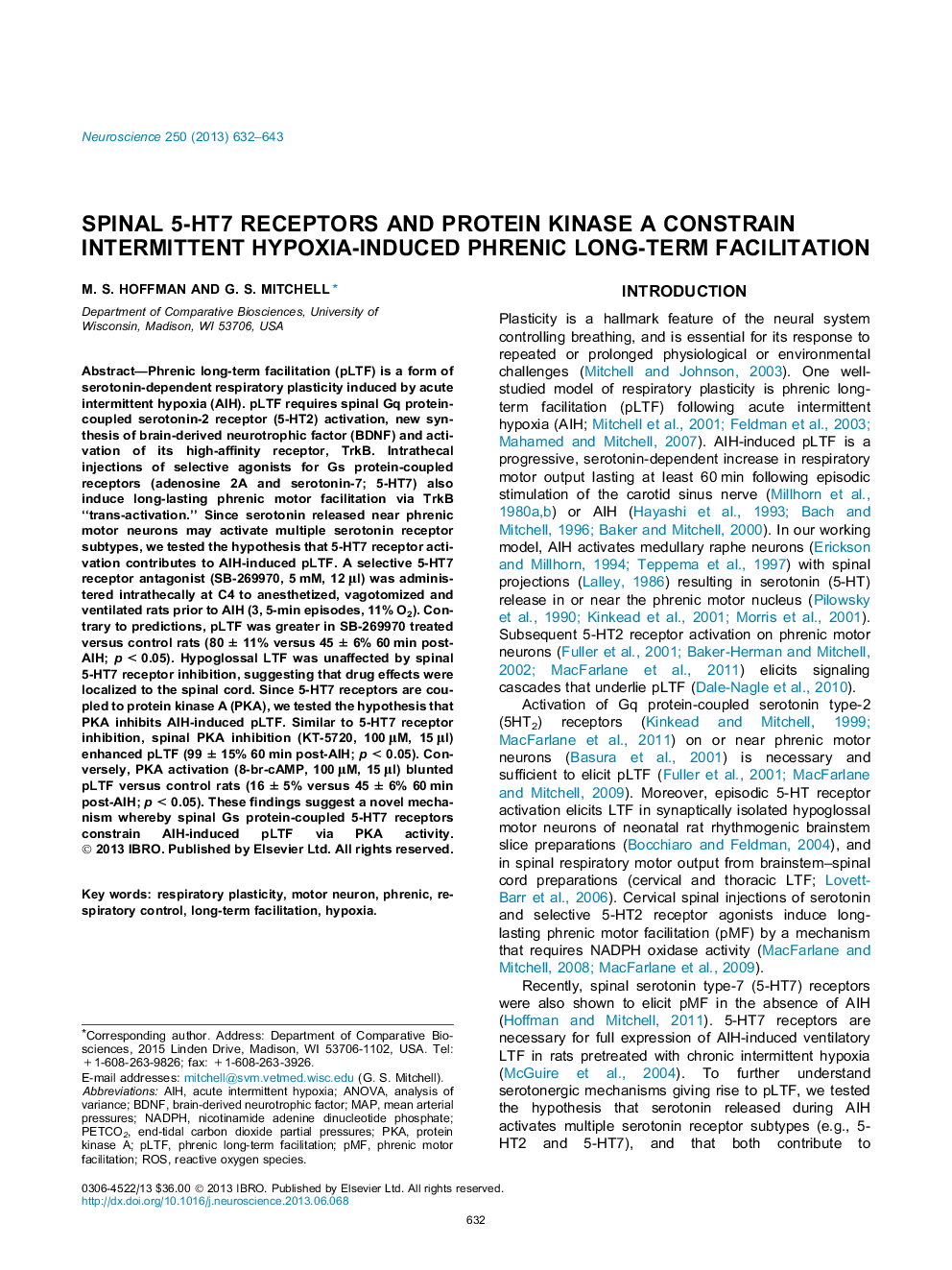| Article ID | Journal | Published Year | Pages | File Type |
|---|---|---|---|---|
| 6274475 | Neuroscience | 2013 | 12 Pages |
Abstract
Phrenic long-term facilitation (pLTF) is a form of serotonin-dependent respiratory plasticity induced by acute intermittent hypoxia (AIH). pLTF requires spinal Gq protein-coupled serotonin-2 receptor (5-HT2) activation, new synthesis of brain-derived neurotrophic factor (BDNF) and activation of its high-affinity receptor, TrkB. Intrathecal injections of selective agonists for Gs protein-coupled receptors (adenosine 2A and serotonin-7; 5-HT7) also induce long-lasting phrenic motor facilitation via TrkB “trans-activation.” Since serotonin released near phrenic motor neurons may activate multiple serotonin receptor subtypes, we tested the hypothesis that 5-HT7 receptor activation contributes to AIH-induced pLTF. A selective 5-HT7 receptor antagonist (SB-269970, 5 mM, 12 μl) was administered intrathecally at C4 to anesthetized, vagotomized and ventilated rats prior to AIH (3, 5-min episodes, 11% O2). Contrary to predictions, pLTF was greater in SB-269970 treated versus control rats (80 ± 11% versus 45 ± 6% 60 min post-AIH; p < 0.05). Hypoglossal LTF was unaffected by spinal 5-HT7 receptor inhibition, suggesting that drug effects were localized to the spinal cord. Since 5-HT7 receptors are coupled to protein kinase A (PKA), we tested the hypothesis that PKA inhibits AIH-induced pLTF. Similar to 5-HT7 receptor inhibition, spinal PKA inhibition (KT-5720, 100 μM, 15 μl) enhanced pLTF (99 ± 15% 60 min post-AIH; p < 0.05). Conversely, PKA activation (8-br-cAMP, 100 μM, 15 μl) blunted pLTF versus control rats (16 ± 5% versus 45 ± 6% 60 min post-AIH; p < 0.05). These findings suggest a novel mechanism whereby spinal Gs protein-coupled 5-HT7 receptors constrain AIH-induced pLTF via PKA activity.
Keywords
pLTFPhrenic long-term facilitationPhrenic motor facilitationNADPHPhrenicAIHPetCO2PMFpKaBDNFROSanalysis of varianceANOVAlong-term facilitationBrain-derived neurotrophic factormapMotor neuronnicotinamide adenine dinucleotide phosphateHypoxiaacute intermittent hypoxiaprotein kinase ARespiratory plasticityRespiratory controlReactive oxygen species
Related Topics
Life Sciences
Neuroscience
Neuroscience (General)
Authors
M.S. Hoffman, G.S. Mitchell,
